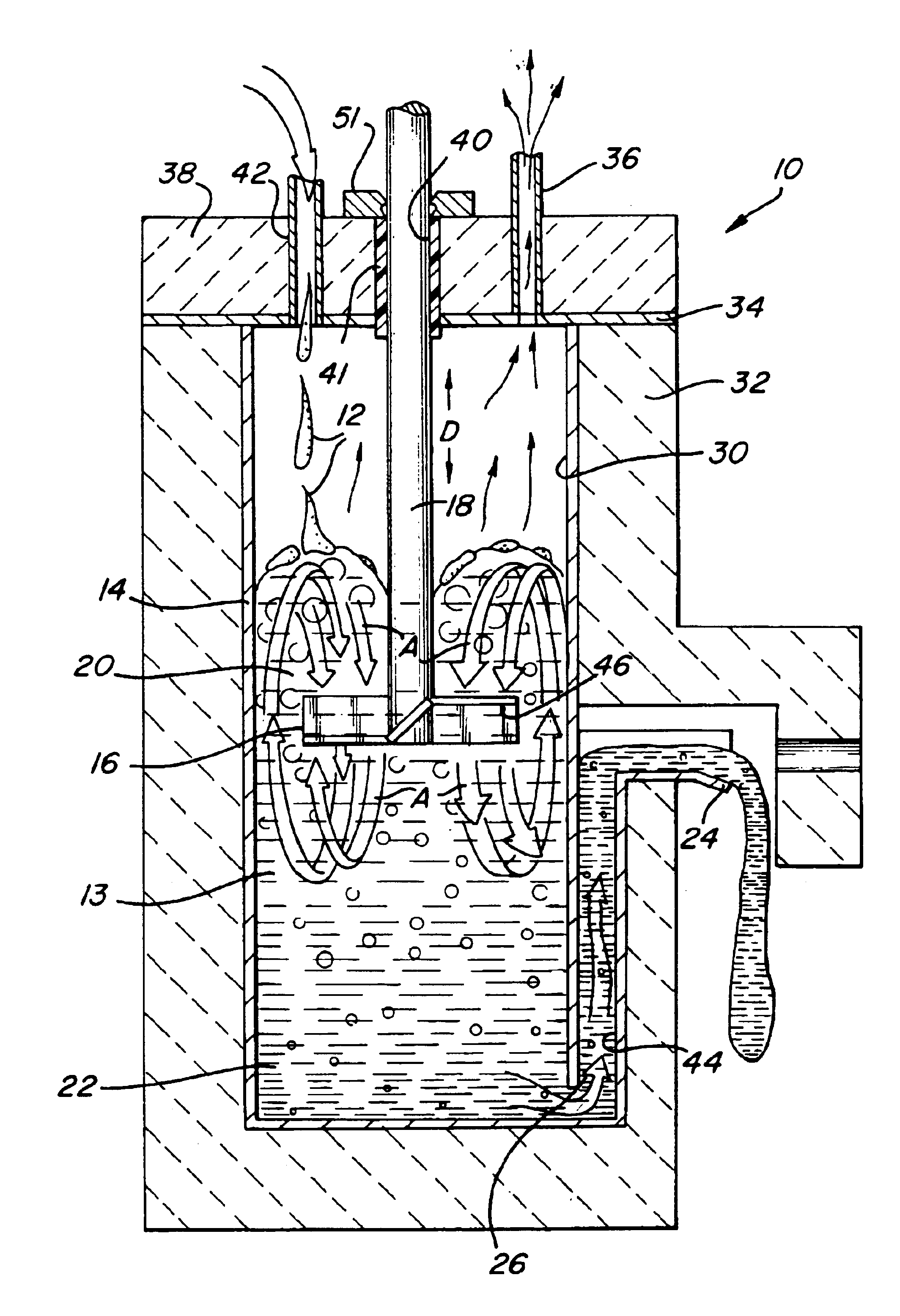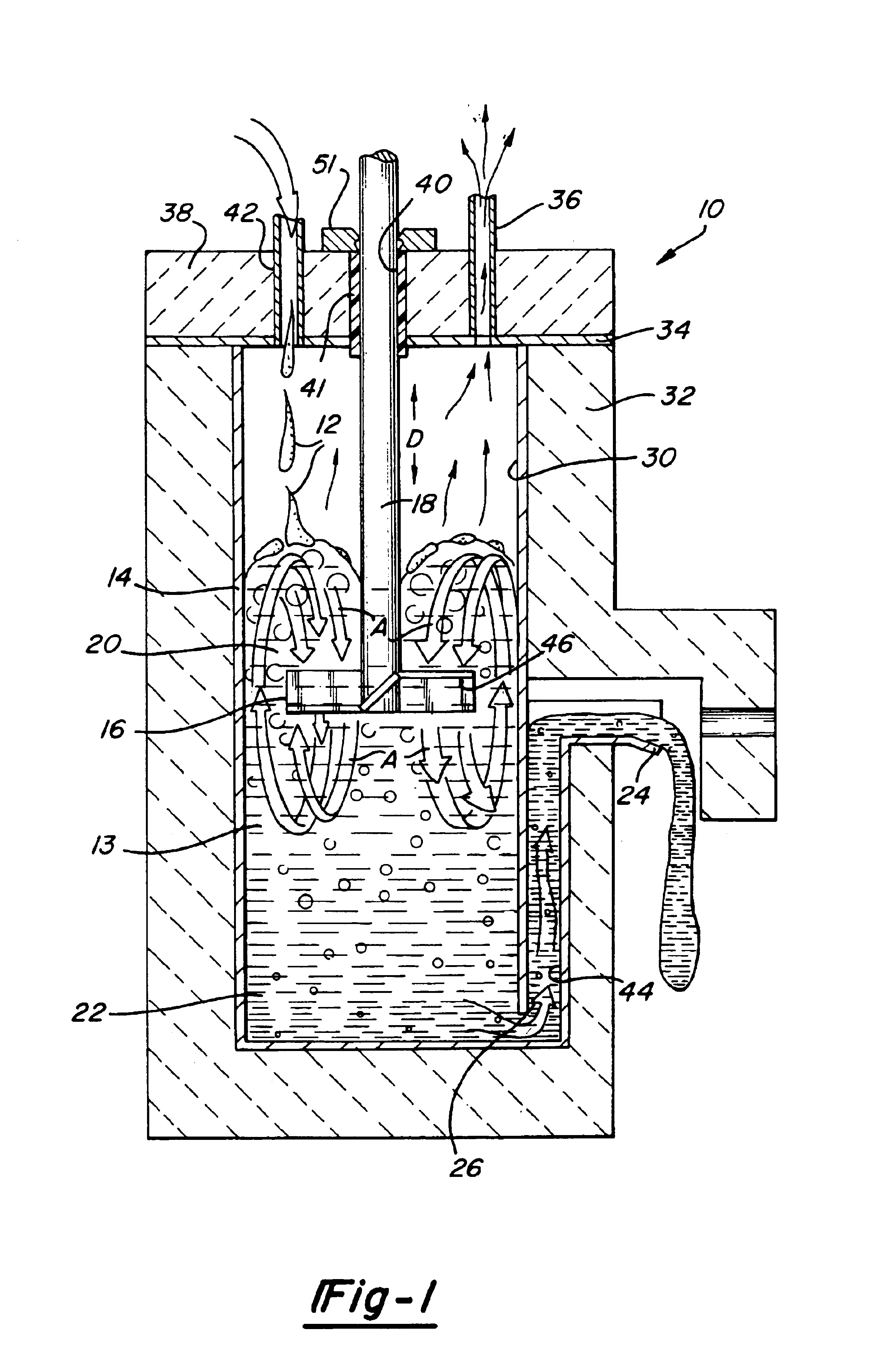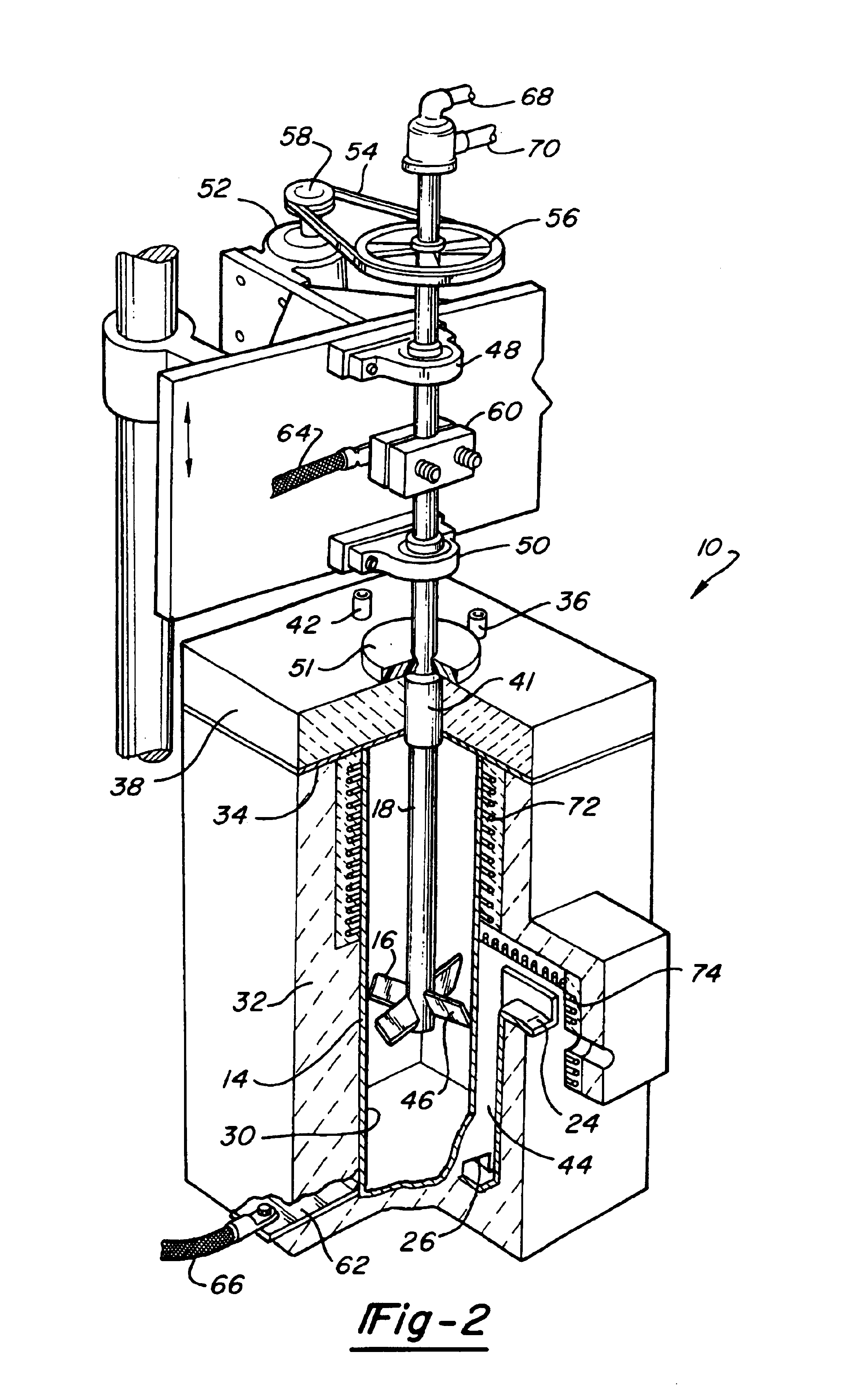Method and apparatus for waste vitrification
- Summary
- Abstract
- Description
- Claims
- Application Information
AI Technical Summary
Benefits of technology
Problems solved by technology
Method used
Image
Examples
Embodiment Construction
[0027]Referring now to FIG. 1, the waste vitrification apparatus 10 of the present invention is shown receiving a feed stream 12 preferably comprising an aqueous slurry of glass batch and waste materials. The feed stream 12 could also be dry glass batch or melted glass batch and waste materials fed into the apparatus 10. The glass batch is preferably boro-silicate batch selected for its low melting point in the range of 950° C. to 1050° C. Other compositions may be used depending upon the thermal and chemical limitations of the vessel. As used herein, the term glass batch is intended to encompass both raw materials for making glass and fused and partially fused materials used in making glass known as frit or cullet. The wastes to be disposed of are either radioactive wastes, hazardous chemical wastes, or other wastes which require a durable disposal medium.
[0028]A vessel 14 is provided to receive the feed stream 12 in a glass melt 13. A mixing impeller 16 is disposed in the vessel 1...
PUM
| Property | Measurement | Unit |
|---|---|---|
| Electrical conductivity | aaaaa | aaaaa |
| Mass | aaaaa | aaaaa |
| Depth | aaaaa | aaaaa |
Abstract
Description
Claims
Application Information
 Login to View More
Login to View More - R&D
- Intellectual Property
- Life Sciences
- Materials
- Tech Scout
- Unparalleled Data Quality
- Higher Quality Content
- 60% Fewer Hallucinations
Browse by: Latest US Patents, China's latest patents, Technical Efficacy Thesaurus, Application Domain, Technology Topic, Popular Technical Reports.
© 2025 PatSnap. All rights reserved.Legal|Privacy policy|Modern Slavery Act Transparency Statement|Sitemap|About US| Contact US: help@patsnap.com



